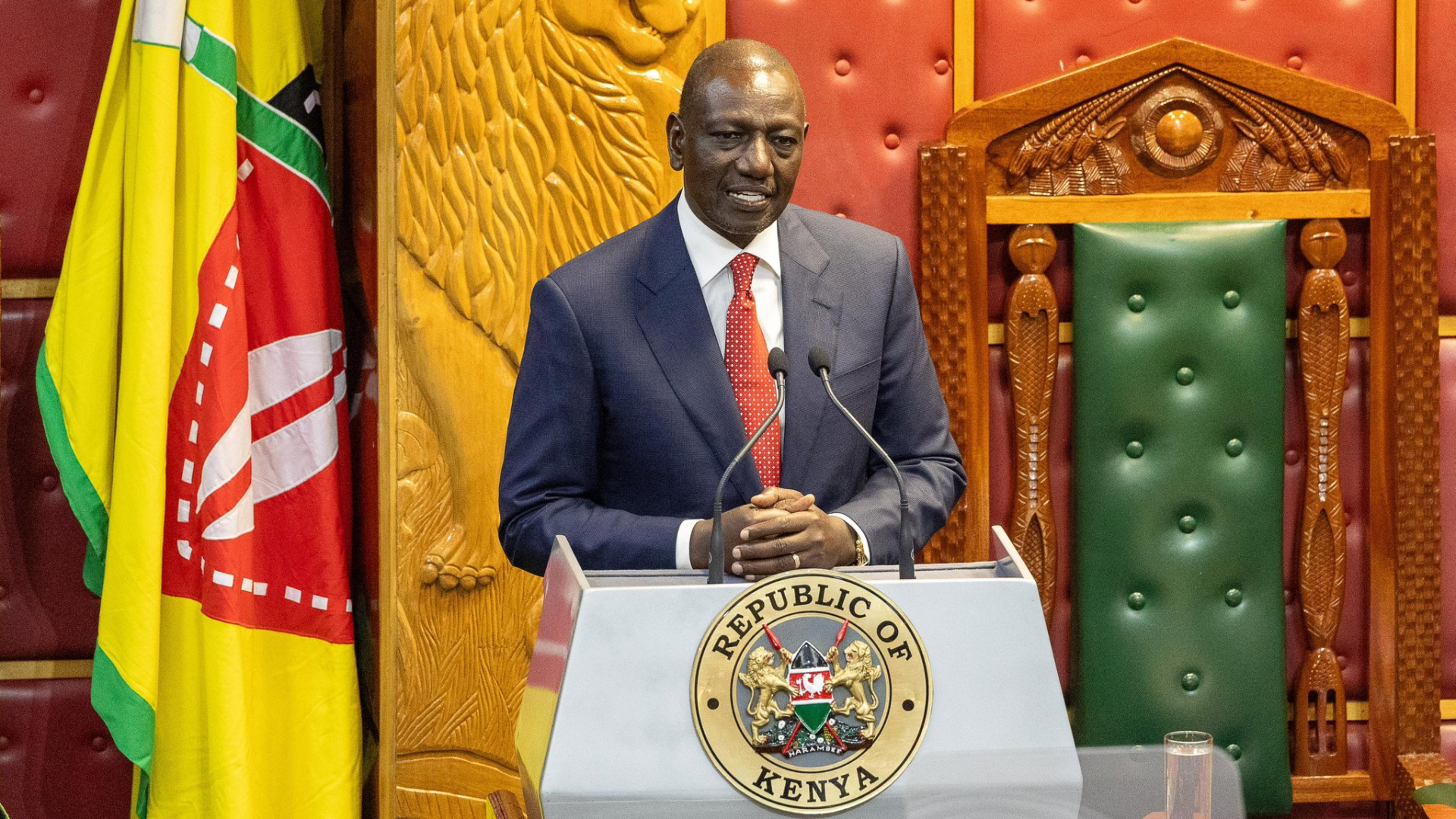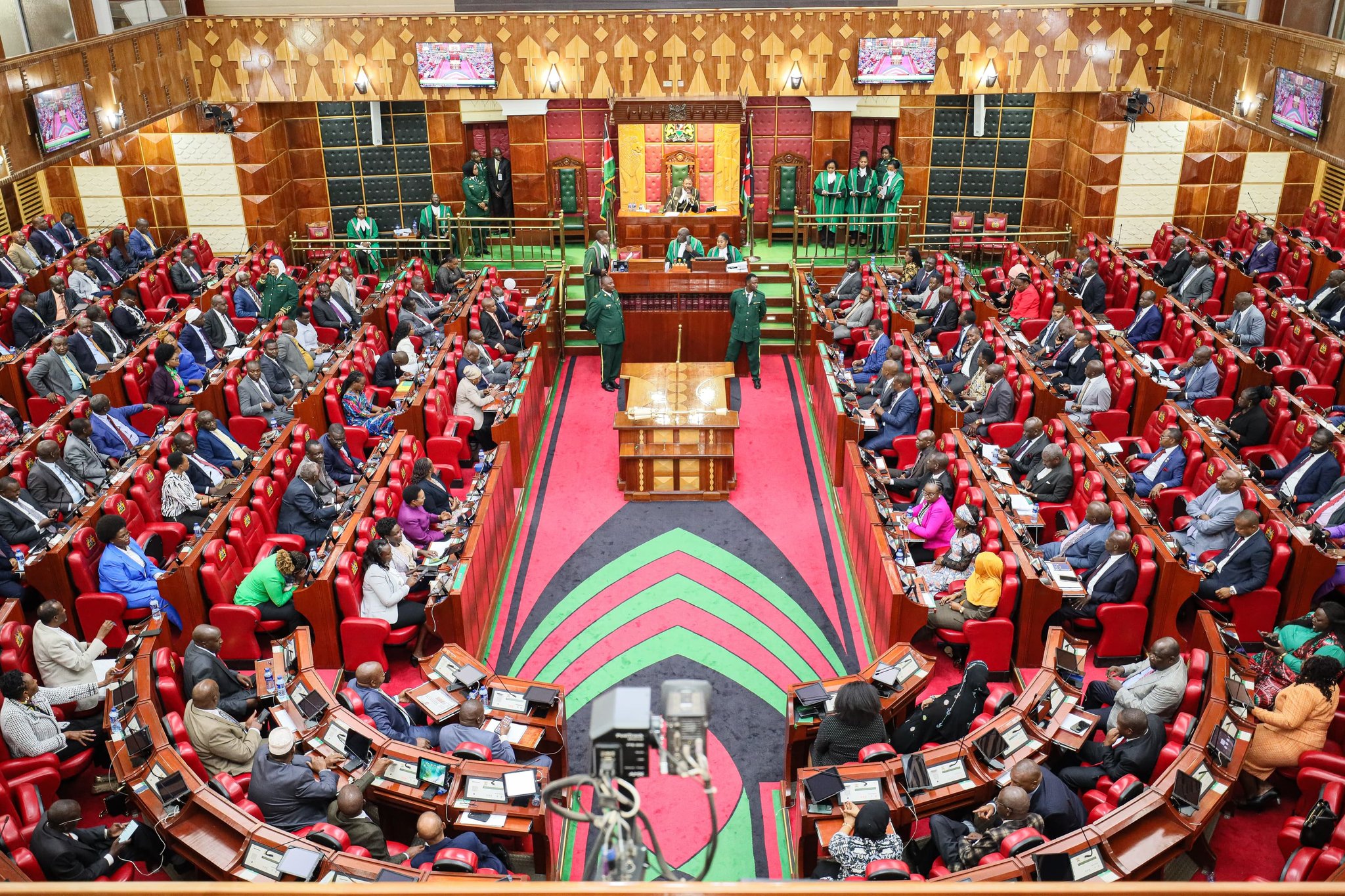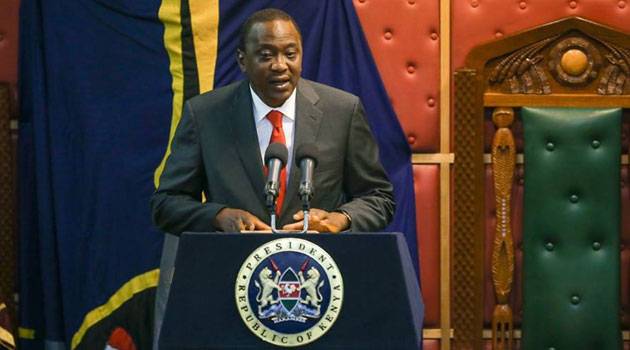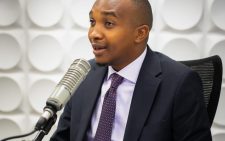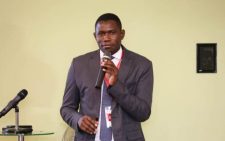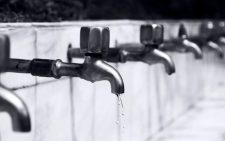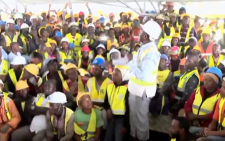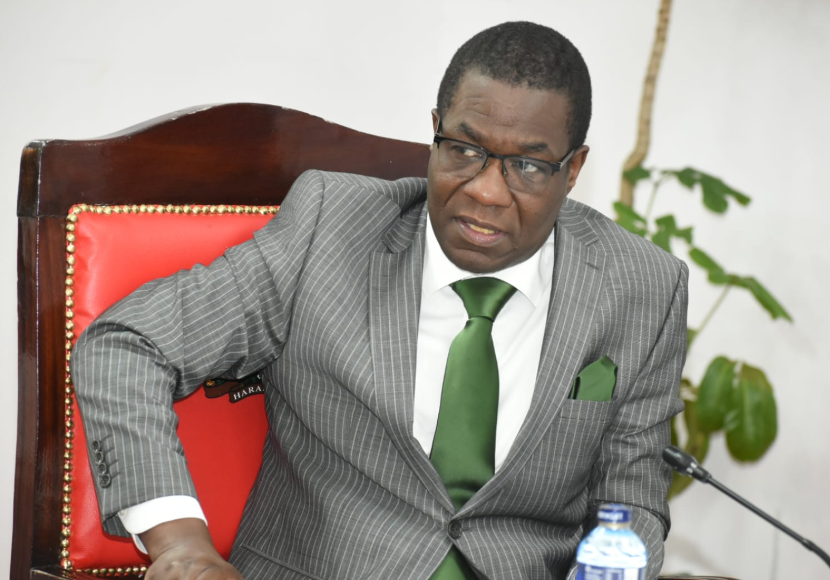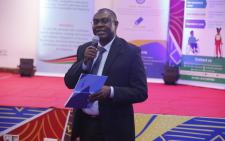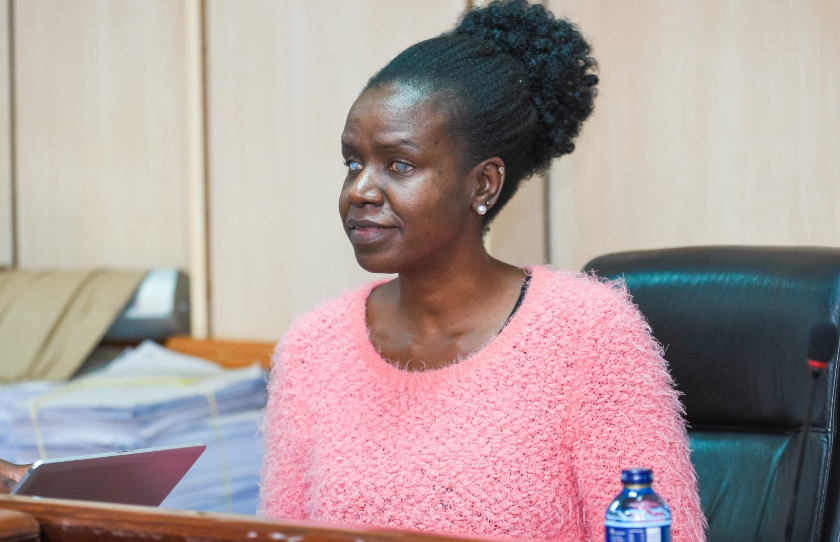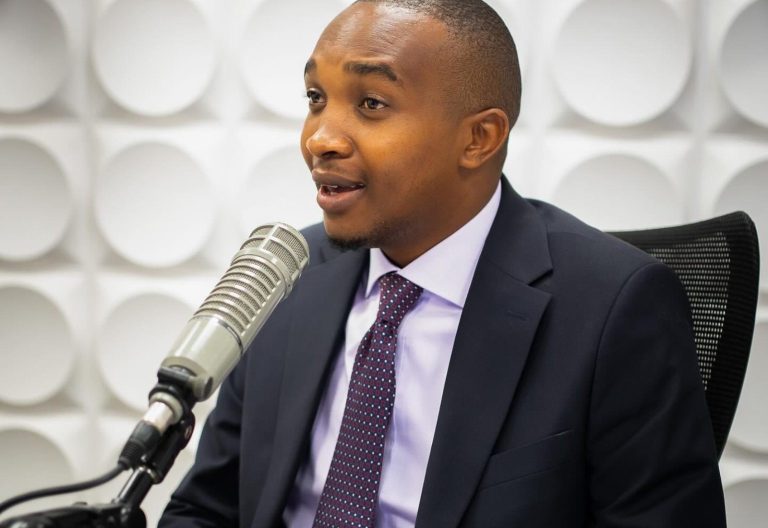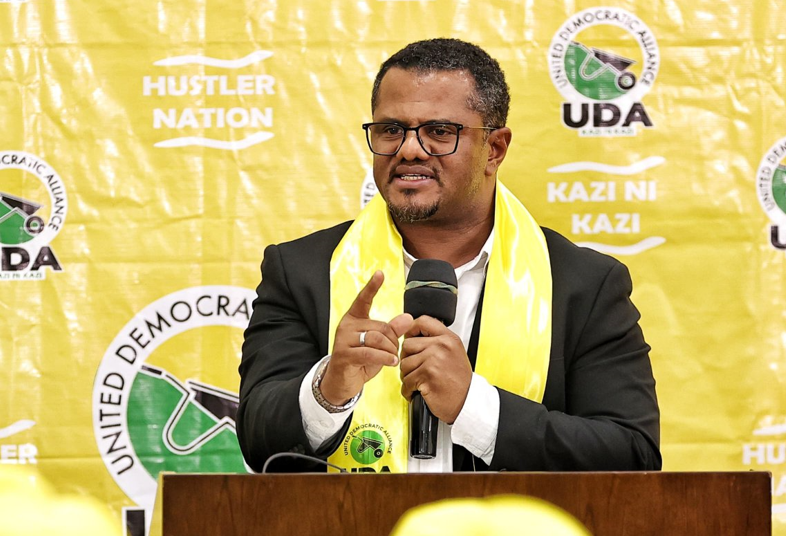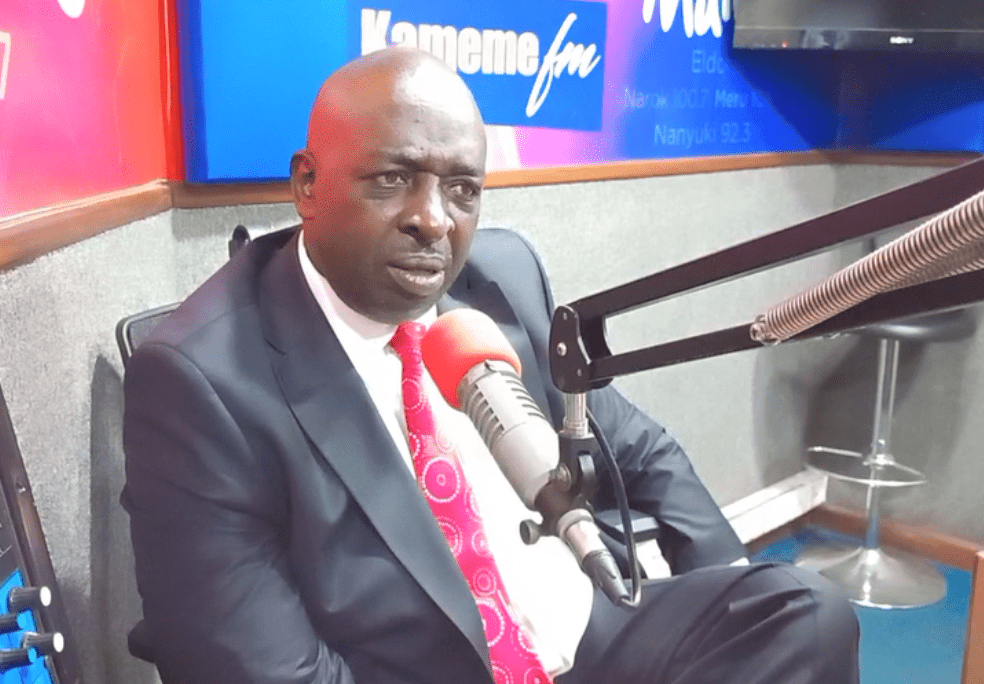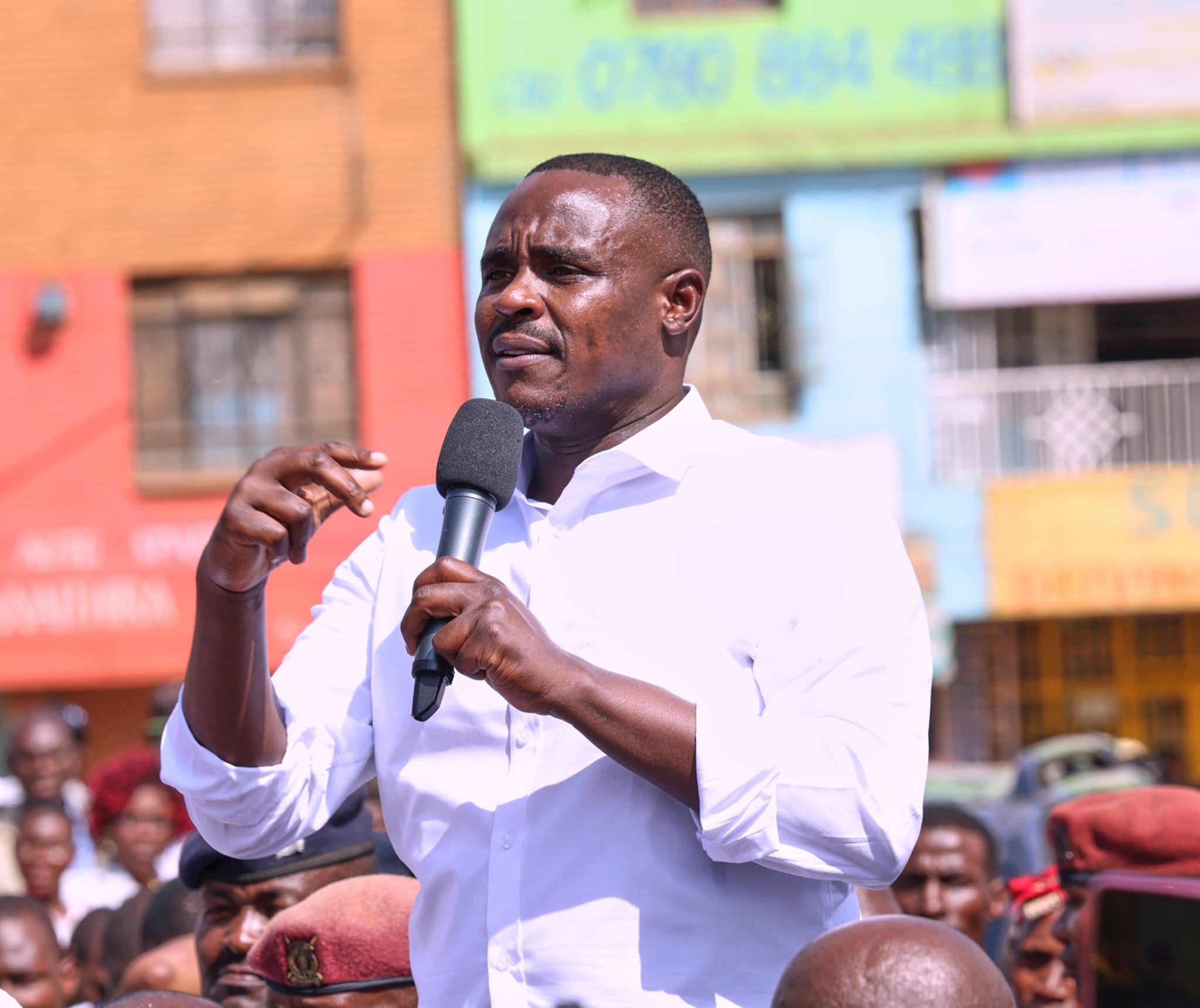248-page President Uhuru Kenyatta’s State of the Nation full speech
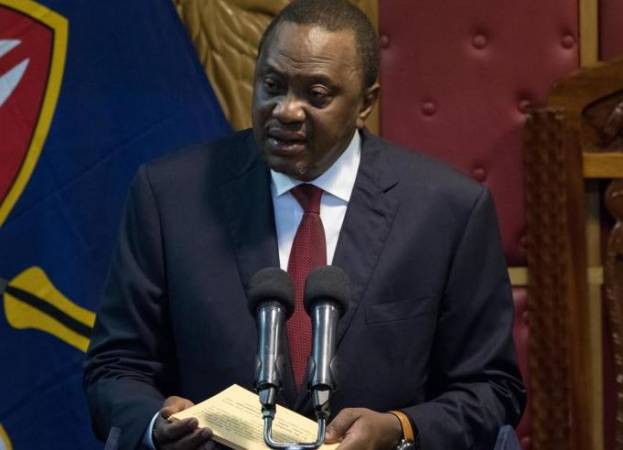
President Uhuru Kenyatta delivered his 8th State of the Nation speech on Tuesday November, 30 at the parliament buildings in Nairobi.
In the 2-hour-long speech, he began by sharing how former Prime Minister Raila Odinga and former Cabinet Minister Musalia Mudavadi welcomed him to Parliament for the first time.
“Honorable Speaker of the National Assembly, Honorable Speaker of the Senate, Honorable Members of Parliament, Distinguished Guests, Ladies and Gentlemen, Good Afternoon,” Uhuru began his speech.
- It is my distinct honour and high privilege to return to the chambers of Parliament to deliver my Eighth State of the Nation Address since my assumption of Office as the Fourth President of the Republic of Kenya, on Tuesday, 9th April, 2013.
- As always, it gives me great pleasure to return to this, August House where I served on both sides of the parliamentary divide, with many of you present here today.
- I first served as a nominated Member of Parliament and later as a Cabinet Minister. I was a young man then; which is a testament that even the young can serve. After an unsuccessful Presidential bid in 2002, I found myself on the opposition benches as the Leader of the Official Opposition and Member of Parliament for Gatundu South.
- Five years later, and in recognition of my distinguished and principled service, I was called to serve as the Deputy Prime Minister in the Grand Coalition Government under His Excellency the Former President, Hon. Mwai Kibaki and under the Former Prime Minister, Rt. Hon Raila Odinga. In that Administration, I held the position of Minister for Trade and later as Minister for Finance.
- This journey of mixed fortunes taught me that you could serve your country in any capacity because service is not a position; it is action. It also taught me to have empathy for both sides of the parliamentary divide and all shades of political opinions.
- Of all the lessons, the enduring one is that Kenya is always greater than any one of us. In times of great political turmoil, patriotic men and women were spurred by the love of their Country to bridge partisan divides and to come together to put Kenya first.
- It was not easy but it was necessary. Then, as is now, we were called upon to do all that was necessary to heal Kenya, to build bridges, and to focus on the 99% of shared visions of a better Kenya as a priority to the 1% of differing ideologies.
- Personal ambitions were placed aside for the good of Kenya and for the enduring benefit of generations of Kenyans yet unborn. That selfless service, that sacrifice, led to the people of Kenya bestowing on me the high honour and extreme privilege of serving them as President, come 2013.
- For the trust and faith that the Great People of Kenya placed in me, I am and will forever be, most grateful and eternally humbled.
Mr. Speaker,
- Today, I return to Parliament as President. I am here to fulfill a constitutional imperative introduced into our political tradition and practice by the 2010 constitution.
- In fact, I was indeed privileged to be the second President to discharge this constitutional mandate when I made my first State of the Nation Address on 27th March, 2014.
- The constitution, at Article 132, mandates the President to report to a Special Joint Sitting of both Houses of Parliament on measures taken and progress made in the realization of our National Values as defined by Article 10 of the Constitution.
- I am also constitutionally obliged to report on the status of our fulfilment of the international obligations of the Republic, the state of our national security, and the general State of the Nation.
- In line with this constitutional instruction, my address today will lay emphasis on three elements I consider important for our country.
- First is the state of our economic development, which is about our national wellbeing; second is the state of our social structure, which looks at the restoration and propagation of the dignity of our people; and third is the state of our nationhood, which speaks to the soul of the nation, including the state of our democracy.
- Before I report on these thematic areas, allow me to give a brief account of the state of our national response to emerging disruptions.
- Specifically, I want to put on record how the power of choice on the part of My Administration, as supported by Parliament and the County Governments, turned the COVID-19 Pandemic from a national crisis to an intergenerational opportunity.
Mr. Speaker,
- When the Pandemic hit our country in March of 2020, I was quick to warn the nation that a crisis is twin fold; partly a danger and partly an opportunity, at the same stroke.
- I highlighted the inescapable fact that depending on what you focus on in a crisis, you will emerge either triumphant or indecisive, out of fear and despair. In other words, a crisis is all about choices.
- Those who chose danger and fear under the COVID scare did not survive. Those who saw the crisis through the lens of opportunity, they developed resilience and were able to ‘build back better’.
- For instance, a Kenyan company known as Revital, operating in Kilifi County, became Africa’s largest producer and exporter of vaccine syringes during the COVID Period. In 2020 alone, Revital exported over 70 million COVID vaccine syringes to over 20 countries globally.
- In fact, Revital currently has the capacity to produce 300 million COVID vaccine syringes every year. The global shortage for COVID vaccine syringes stands at 2 billion syringes a year.
- This means that Revital is able to produce 1 out of every 10 COVID vaccine syringes globally. This company saw opportunity in the crisis of COVID, adapted accordingly, and innovated its business processes to optimize on the new opportunity.
- Another company in the same league is Hela, a global apparel making company with a foothold in Kenya. In the first months of the pandemic, this company changed its strategy from producing clothes to producing PPE and facemasks.
- With the WHO requirements of 80 million facemasks per month at the height of the COVID duress, Hela produced 5 million masks a month between April and May 2020. This means that through innovation Hela manufactured 1 out of 16 masks required globally per month; contributing immensely to the slowing down of the COVID pandemic. This was a case of seeing opportunity in a disaster and adapting to its challenges.
- However, choices are nothing without leadership. I say so because when COVID-19 hit our country, My Administration found itself confronted with a Dilemma of Two Rights. Opinion was, divided on, whether to lockdown the country or to leave it open. What made the difference was leadership.
- One side of the divide presented an economic argument. They wanted us to leave the country “open” and save the economy. They argued that COVID was a health crisis that should not trump economic imperatives.
- The other side of the divide made a compelling health argument against the economic argument. Led by a brain trust of medical scientists and researchers, they argued that the country had no option but to lockdown. Their models pointed to a soaring crisis if drastic choices, were not made. According to those experts, a series of irreducible minimums had to, be met, before considering softer health protocols.
- After much reflection, My Administration opted for the public health argument over the economic argument. Our rationale was that we can always revive an ailing economy; but we cannot bring to life those who die from COVID19. And with this logic informing our choices, we set out to build the irreducible minimums recommended by the experts to forestall a COVID disaster.
- Although the health argument won, we did not dismiss the economic argument in toto. We made fiscal choices to cushion the economy through a number of economic stimuli. And today I am happy to go on record in this August House as having succeeded in the choices My Administration made.
- Because of our fiscal stimuli, today I can report that the impact of COVID on our economy was 14 times lesser than that on the global economy.
Mr. Speaker,
- As part of the First Stimulus Package we announced interventions that that warranted the National Exchequer to forgo taxes amounting to exchequer Ksh. 176 Billion. These tax measures included:
- The immediate reduction of VAT from 16% to 14%;
- 100% Tax Relief of all persons earning up to Ksh. 24,000.00
- Reduction of Pay as You Earn from 30% to 25%;
- Reduction of Corporation Tax from 30% to 25%;
- We caused the lowering of the Central Bank Rate (CBR) to 7.25% from 8.25% so as to prompt commercial banks to lower interest rates applicable to their borrowers, and thereby availing much needed affordable credit to MSMEs across the Country;
- We Lowered the Cash Reserve Ratio (CRR) to 4.25% from 5.25% so as to provide additional liquidity of Ksh. 35 Billion to commercial banks in order to directly support borrowers that were distressed as a result of the economic effects of the COVID-19 pandemic;
- Central Bank of Kenya provided flexibility to banks with regard to the requirements applicable to loan classification and provision of loans that were performing as at 2nd March 2020;
- We further engaged banks and all financial institutions to support all enterprises and families that sought to restructure their commercial banking families through debt moratoriums and review of tenure of the facilities.
- There was a temporary suspension of the listing with Credit Reference Bureaus (CRB) of any person, Micro, Small and Medium Enterprises (MSMES) and corporate entities whose loan account had fallen overdue or was in arrears;
- The Kenya Revenue Authority was directed to expedite the payment of all verified VAT refund claims amounting to Ksh.10 Billion; or in the alternative, allow for the offsetting of Withholding VAT, in order to improve cash flows for businesses;
- Ksh. 6.0 billion from the Universal Health Coverage kitty was immediately appropriated strictly towards supporting counties in the recruitment of additional health workers to support in the management of the spread of COVID-19;
- Subsequently, My Administration rolled out the Second Stimulus Package with the Support of Parliament, whose tenet was an 8-Point Economic Stimulus Programme amounting to Ksh. 56.6 Billion.
- The first element of the 8-point programme focused on the “Buy Kenya Build Kenya” Policy. On local infrastructure development, we allocated Ksh. 10 Billion towards The National Hygiene Program (NHP), dubbed the Kazi Mtaani initiative. The Programme was conceptualized as an extended public works project aimed at utilizing labor intensive approaches to create sustainable public good in the urban development sector. The Programme has so far secured gainful engagement to over 750,000 youths engaged in improvements to the environment and hygiene and in rehabilitation of access roads, footbridges and other public infrastructure through local labour.
- Second was on Education with an additional KSh. 6.5 Billion to the Ministry of Education. To hire 10,000 teachers and 1,000 ICT interns to support digital learning and acquisition of 250,000 locally fabricated desks.
- The third element of the programme targeted Small and Medium Enterprises, through an injection of Ksh 5 Billion as seed capital for the SME Credit Guarantee Scheme. The intention here is to provide affordable credit to small and micro enterprises.
- The fourth focused on Universal Health Coverage through acquisition of locally made beds. The fifth element of the stimulus programme focused on agriculture. My Administration prioritized Ksh. 3 billion for the supply of farm inputs through e-vouchers, targeting 200,000 small scale farmers and a further Ksh. 1.5 billion to assist flower and horticultural producers to access international markets, in a period where we had a shortage of flights into and out of the country.
- Tourism was the sixth area of target for the stimulus programme. To jumpstart this important sector, and protect its players from heavy financial losses, my Administration provided soft loans to hotels and related establishments through the Tourism Finance Corporation (TFC), and A total of Ksh. 2 Billion was applied towards renovation of facilities and the restructuring of business operations by actors in this industry.
- To mitigate the impact of deforestation and climate change, and to enhance the provision of water facilities, my Administration rehabilitated wells, water pans and underground tanks in the Arid and Semi-Arid areas. We applied Ksh. 2.5 Billion for flood control measures and our Greening Kenya Campaign.
- The Eighth and final element of the stimulus programme was manufacturing. As a strategy, we enforced the policy on “Buy Kenya Build Kenya”, we set aside an initial investment of Ksh. 600 million to purchase locally manufactured vehicles. This was expected to sustain the operations of local motor vehicle manufacturers, and the attendant employment of workers.
Mr. Speaker,
- The foregoing interventions helped to reinforce the resilience of our economy, whilst cushioning millions of households against the effect of the economy. In that regard, while most economies in the world shrunk, Kenya’s economy grew at 0.3% during 2020 despite of the COVID challenge. Although this positive growth was minimal, the second quarter of 2021 registered the most impressive growth ever recorded in our nation’s real GDP.
- During the second quarter of 2021, real GDP recorded a phenomenal 10.1% growth. This is the highest growth ever recorded in a one quarter in Kenya’s history. It is also the first time Kenya has hit a double-digit growth. The last time Kenya’s economy got close to this kind of performance was in 2010 during the Grand Coalition Government, when the economy hit an 8.4% growth rate.
- And it was this impressive trajectory that led me to announce the 13-point interventions unveiled on Mashujaa Day this year to cushion the economy with a further Ksh. 25 Billion as our Third Stimulus Package, pushing the aggregate of our stimuli to over Ksh. 257 Billion.
- The Third Stimulus Package focused on the key productive and service sectors that covered: agriculture, health, education, drought response, policy, infrastructure, financial inclusion, energy, environmental conservation. Those Thirteen Interventions were as follows:
- The First Intervention was in the Tea Sub-Sector: I am pleased to confirm that we have supported the Tea Sub-Sector with Ksh. 1 Billion in support of fertilizer subsidy for our Tea Farmers, securing our nation’s top agricultural export;
- The Second Intervention was in the Sugar Sub-Sector: I note with satisfaction that smoke is billowing again in our public sugar mills, following the allocation of Ksh. 1.5 Billion in aid of the sugar sector, that is being applied towards factory maintenance and payment of farmers’ arrears;
- The Third Intervention was in the Coffee Sub-Sector: I confirm that Ksh. 1 Billion was released in support of the ongoing reforms in the sub-sector that is being applied towards completion of the ongoing targeted interventions in the Coffee Sub-Sector;
- The Fourth Intervention was in the Livestock Sub-Sector: The Ksh. 1.5 Billion national Livestock offtake Programme is on course, in support of the communities adversely affected by the ongoing draught in the ASAL counties;
- The Fifth Intervention was also in the Livestock Sub-Sector: I confirm that the interventions geared towards the reduction of the cost of animal feeds are well on course.
- The Sixth Intervention was in Education: Noting the success of My Administration’s policy on 100% transition from primary to secondary school, I directed the National Treasury to allocate a further Ksh. 8 Billion to the Ministry of Education for the CBC Infrastructure Expansion Programme, targeting the construction of 10,000 Classrooms; I am most pleased to confirm to the nation that in all the counties works in construction of the classrooms should commence by early December, 2021.
- The Seventh Intervention was in Health: To enhance access to medical coverage across our nation, and as part of our Universal Health Coverage Programme, I directed the Ministry of Health to establish an additional 50 new Level 3 Hospitals, to be situated in both non-covered areas as well as densely populated areas across our nation; and I also directed the National Treasury to allocate the sum of Ksh.3.2 Billion for immediate construction of those new medical facilities;
- The Eighth Intervention was in the National Sanitation Programme: We started this programme to harness the energy of our young people and to give them a buffer against COVID-19 related unemployment. Noting the success of Kazi Mtaani Programme and its effect in enhancing opportunities for the youth across the country, I directed the National Treasury to allocate Ksh. 10 Billion for the third phase of the Kazi Mtaani Programme. The programme covering over 200,000 youths will be rolled out to all Counties, with priority given to densely populated areas;
- The Ninth Intervention was on Energy and Petroleum. Being fully aware of the positive strides being made in our economic recovery, and cognizant that those gains stand the risk of being eroded by high-energy prices. I am pleased to confirm that we are on course to institutionalize the sought reforms.
- The Tenth Intervention was on Access to Credit: Critically, I asked the National Treasury and the Central Bank of Kenya to consider suspending the blacklisting of creditors with loans below Ksh.5 million at the Credit Reference Bureau (CRB), in a move that targeted retaining the bounce-back potential of the foundation of our economy.
- As the Eleventh Intent, I also asked the National Treasury and Central Bank of Kenya to consider revising the maximum amount an individual or enterprise can withdraw or deposit from a bank. Previously, it stood at one million shillings, which was not supportive of our current business environment.
- I am glad to report to Parliament that as of 8th November 2021 the Central Bank of Kenya issued a notice suspending the listing of negative credit information for borrowers with loans below Ksh.5million that fell into arrears from October 1st 2021 to September 30th 2022.
- This will give the MSMEs 12 months to re-organize themselves and adapt to the new economic normal.
- I am also happy to report that the Central Bank of Kenya is at an advanced stage of revising the one million threshold for cash deposits and withdrawals in the banks. This will facilitate easy transactions for MSMEs and help the economy respond to the COVID shocks.
- The Twelfth Intervention was in the Digital Financial Services Sub-Sector: In recognition of the importance of digital financial services especially to the small-scale traders and the household at large, I directed the National Treasury to engage all digital payment providers with an aim of deepening and expanding the use of digital payment channels.
- The Thirteenth Intervention was a two-pronged one in the area of vaccination against COVID-19: As part of our national response to the COVID-19 Pandemic, we rolled out a National Vaccine Deployment Plan. Aiming to vaccinate 10 million adults by June 2022, and approximately 16 million by June 2023.
- With regard to COVID-19 vaccine production, we have set out to implement the lesson of self-reliance which was one of the key learning points of the Pandemic. As the first step towards this goal, we have established the Kenya Biovax Limited as a venture that would locally produce anti COVID-19 vaccines. I therefore directed the Ministry of Health to operationalize the company to ‘form and fill’ and eventual manufacture of our locally produced vaccine by Easter of 2022.
- Honorable Members, Ladies and Gentlemen, at this point I would also want to take special note of the resilience of our revenue collection system under the Kenya Revenue Authority (KRA). For the first time in 8 years, KRA has exceeded its revenue collection target despite the COVID stress on the economy. The KRA projected a Ksh1.52 Trillion collection in tax during 2020they collected Ksh1.67 Trillion, which was in excess of their projected intention.
- But on this note I must also report on the sterling performance of KRA, not only under the COVID duress, but in the last 8 years of My Administration. In the last 8 years, KRA has collected Ksh.10.8 Trillion cumulatively in revenue.
- This means that in just 8 years, KRA has collected the equivalent of Kenya’s total GDP. It also means that on average KRA collected Ksh.1.3 Trillion every year.
Honourable Members,
- To accelerate the turnaround of our micro, small, and medium enterprises, under the Ease of Doing Business Government Agenda, My Administration has implemented remarkable reforms over the years.
- These measures have not only improved the country`s business climate they have also mitigated the challenges and bottlenecks impacting businesses.
- The key reforms that we have implemented include the full automation of business-registration services; re-engineering of the application for power; water and sewer connection; and automation of the land registration processes. In addition, we have adopted e-payment, e-filling and e-service at the Commercial Division of the High Court, and fully operationalized the Small Claims Court, which has seen disputes involving SMEs, (mostly our youths) being resolved within a record 60 days and thus freeing up capital locked-up in legal disputes.
- Equally important is the full automation and streamlining of the payment of taxes in order to ease burden of compliance and the re-designing of the import and export processes, which has reduced the cost while improving efficiency of our Ports, among other notable reforms.
- Mr. Speaker, as an affirmation that our reforms on ease of doing business are bearing dividends, just last week we scored a global first. The President of the European Investment Bank was in the country to witness the official opening of the European Investment Bank FIRST regional hub outside of the European Union. The Nairobi regional hub will cover eleven countries in Eastern and Central Africa and will act as a pilot for setting up of other EIB regional hubs into the future. This speaks to My Administration’s agenda to position Nairobi as an International Financial Centre.
Mr. Speaker,
- An even better example of COVID resilience is the strengthened relationship between the national and county governments, courtesy of the COVID-19 crisis. Although the National and County Government Summit has operated smoothly since it became effective, I must admit that the COVID pandemic revitalised its energy.
- Whenever we gathered as a summit during this crisis, the consciousness of the entire nation; was called to order. We put asunder the political dynamics of the moment, and our only business became Kenya.
- We demonstrated in word and in deed, that devolution is a powerful driver of socio-economic development, it creates synergies and acceleration points that in turn generate tangible benefits for all Kenyans.
- We understood very well that to overcome this crisis, we had to act as one. Rather than allowing the Nation to succumb to COVID fatigue, we came together and galvanised our people towards strength, resilience, and build back. Where others stumbled and fell, we rose and soared.
- During the COVID duress, the National and County Governments demonstrated their true leadership. Nothing demonstrates this better than the strengthening of our healthcare systems under the dark cover of the COVID pressure.
- When the COVID pandemic hit our country, we had an ICU bed capacity of only 108 beds countrywide. This translated to an average of two ICU beds in each county. And in the face of COVID, this reality was a disaster. But given the collaboration between the two levels of government, we increased the ICU bed capacity by 502% during the COVID period.
- Equally important to note, during the COVID-19 pandemic period we had a capacity to generate only 3 million liters of oxygen per day in March 2020. Today, I am proud to say that we have improved our Oxygen generation capacity in public health facilities, by ten times to 32 million liters per day as at October 2021.
- Kenya can be proud of one more COVID innovation. In March 2020, we had only one laboratory that could test notifiable diseases of international concern. In fact, we had to send our tests for notifiable diseases to South Africa.
- When the COVID pandemic hit our country, we had to wait for five days for the South African laboratories to send us results. Today, we have moved from one testing laboratory to 95 well-equipped laboratories.
- What is it that we have learnt more from the COVID disaster; we have learned that our solutions must be home-grown. That is why we have commissioned a vaccine development project for disruptive viruses like COVID, to serve not only Kenya but also the region at large.
- Mr. Speaker, another national reminder of the opportunities we seized during COVID was the sight of the Likoni Channel Crossing. Previous scenes of Mombasa residents, congested along the Likoni Ferry are now a thing of the past. The iconic Likoni Floating Bridge, built in a record time of six (6) months, opened to the public in December 2020, and sees over 100,000 residents cross the Channel on a daily commute in an orderly, safe and secure manner.
- This has not only allowed for the efficient management of time and mobility across the channel, but significantly moderated the incidences of COVID19 transmission, contributing to our overall disease mitigation strategy in the coastal region.
- Kenya has taken pride of place through this initiative – a first of its kind in the region – linking Liwatoni on Mombasa Island with Ras Bofu in the Likoni mainland. We intend to adopt such innovative approaches and learning to deliver on similar challenges in our various sectors.
Mr. Speaker,
- In sum, COVID was both a danger and an opportunity. And because we focused on the opportunity side of the crisis, now Kenya has developed the necessary infrastructure for the rolling out the Universal Health Coverage outreach.
- But of equal importance, our COVID innovations in the area of health have propelled us to a place where Kenya can become a destination for health tourism from the region and beyond.
- Honourable Members, Ladies and Gentlemen, I cannot end this COVID part of my address to Parliament without paying tribute to the people of Kenya for their commendable civic responsibility in the fight against COVID-19.
- While My Administration provided leadership and action, our People supported us with self-sacrifice and civic duty.
- As you will recall, very early in the pandemic I warned our people that the government cannot police the morality of its citizens. I warned that in a war against an ‘invisible enemy’ like COVID, our former way of life would have to be adapted to a new normal where every Kenyan was his or her neighbours keeper. In this, new normal citizens do not fight for liberties; they scramble for survival.
- Young men do not break curfew protocols to gather in the dark; they huddle in their homes afraid of getting conscripted to fight an unseen enemy. And mothers do not crave the opening of country; they cuddle their young ones in the warmth of self-imposed lockdowns. I stressed that we would either stand together or fall together.
- When I made this call for civic responsibility in the face of COVID, I also emphasized that responsibility is NOT a burden; it is a civic duty.
- We pay a debt to our fellow citizens for being a responsible member of our communities. As our forefathers stressed time and time again, our greatest strength is in our unity.
- Today, I am happy to report that, despite the challenges and immense pressures and limits on our way of life, Kenyans rose to the task and acted responsibly. Where others were reluctant, Kenyans gladly sacrificed for the good of the whole.
- For that reason, we were able to bend the curve and prevent the worst-case scenarios. Due to this, and after careful consideration, during the Mashujaa Day celebrations in Kirinyaga County, I lifted the curfew and restriction of movement countrywide.
- Once again, as we have always done, we have shown that Kenyans are a People who put their country above self, neighbour above individual, and we are a people who firmly believe in exercising our rights and freedoms in a responsible and purposive manner.
- While a few battles have been won, the war is not yet won, and we cannot rest on our laurels, Now more than ever, we are faced with yet another variant of the coronavirus – The Omicron Variant – that is said to carry a higher risk of infection. Discovered by a team of South African experts, the variant may explain infection rate spikes that we are now witnessing across the globe.
- I pledged to the Nation in June this year, that by Christmas we would have vaccinated over 10 million adults. As of today, we have achieved a target of 7.1 million Kenyans, up from 5 million as announced on Mashujaa Day in October 2021. Mr. Speaker, to fortify our national resolve against COVID-19, and in honour of all those Kenyans that we have lost to the disease, I urge all Kenyan adults to visit their nearest medical facility to receive their C0VID-19 vaccination.
- The Covid-19 Vaccines are in stock across all our counties and with a daily average rate of over 100,000 vaccinations, we have a smaller target to meet within the next 25 days. I therefore once again call on all Kenyans under the rallying call “25 days to Christmas” to secure their vaccinations to meet and surpass this target. I invite the media in its various forms, to use their platforms to perform this social good, and promote the vaccination campaign.
- This variant’s profile for now remains unknown. It is therefore better to err on the side of caution. By receiving our vaccinations, we will have played our part in securing not only our own lives, but in protecting the lives of those around us. Let us all be responsible in this endeavour.
- That shot in the arm is our most powerful weapon against a disease that has ravaged the world. That shot in the arm of every adult Kenyan will also be a shot in the arm for our economy and our social institutions. It ensures that we can conquer put this disease and fully return to normal.
- No Kenyan should hold back from this perfectly safe and free way to protect themselves, their family, their neighbours and colleagues, and the nation at large. LET US TEAR DOWN THIS DISEASE.
Mr. Speaker,
- Throughout our history, the collective task of nation-building has been guided by the shared aspiration of eradicating the indignities of ignorance, disease, and hunger. This was the vision that fueled our struggle for Independence.
- Post-Independence, every Kenyan generation and every administration has sought to do all within its means to finally slay the three-headed monster that has plagued us for over a century.
- To steer the nation towards a path for the realization of these aspirations, the people of Kenya entrusted the responsibility of actualization of that vision on the elected and appointed State Officers; to whom the powers of our nation have been delegated to. The elected and appointed state officers include the 47 Governors, 350 Members of the National Assembly, 67 Members of the Senate, and the 2, 240 Members of the County Assemblies.
- We are many who must act as one; One Government of Kenya, that acts in unison to give the People of Kenya a better present and a bright tomorrow.
- Our collective contributions to move the nation closer to her destiny of a more fair, just, and equitable Kenya for all builds on the intentions of previous administrations; as supported by the Houses of Parliament and other organs of the State.
- I say this fully aware that the enormous work cannot be, concluded in one generation. Ours is a relay race, where we receive the baton, run the race, and pass it on to our successors UNBROKEN.
Mr. Speaker Sir,
- This most noble intergenerational Quest is what inspired the Big Four Agenda as the Strategic Guide for my second term in Office.
- To do so, My Administration and our colleagues across the three arms and both tiers of Government had to make commitments towards the transformation in four key areas of Intent.
- The first one is liberating our people from the poverty of dignity caused by inadequate services. The second is transitioning our people, especially the youth, from being ‘recipients of handouts’ to producers of goods and services as well as ‘owners of capital’. The third is building a holistic base of human capital that is food secure and health assured. And the fourth is the restoration of the dignity and the pride inherent in one owning a decent home.
Mr. Speaker,
- Now I will give an account of what My Administration has done, not only in the last one year but in the last eight years as well. And I will use the last eight years to give these August Houses a scale against which, everything that My Administration has achieved is to be measured. I will also use history as a yardstick that we can borrow from, to appreciate the achievements that the three Arms and two Tiers of government have delivered.
- The first area of thrust that I will report on is the state of our economic development. And I will borrow from the Four Legacy Frames I articulated in my Madaraka day speech of June 30th 2021 in Kisumu City.
- Under the state of our economic development, I will report on the two frames that have guided My Administration. These are Economic Acceleration and the Big Push Investments.
Mr. Speaker,
- Allow me to start with Economic Acceleration; which is increasing the speed of achieving our economic goals. I also use the word acceleration to imply the mechanism of multiplying our economic fundamentals.
- When My Administration took Office in April 2013, we were eager to multiply what was, bequeathed to us. And I am happy to report to these August houses that we have multiplied our critical fundamentals in ways we did not imagine possible.
- For instance, in 2013, Kenya was Africa’s 12th wealthiest nation with a GDP of Ksh.4.74 Trillion. This GDP was accumulated in a span of 123 years through the four administrations before ours.
- But in just 8 years, My Administration has multiplied this GDP by a factor of two PLUS. Today, our GDP stands at Ksh.11 Trillion, up from Ksh.4.74 Trillion. From being ranked as the 12th wealthiest nation in Africa when I took over, we have moved six ranks to become the 6th wealthiest nation on the continent, on account of the choices we have made.
- And as I said earlier, in the second quarter of 2021, our real GDP grew by 10.1%, the first such growth in the history of our economy. The notable contributors to this growth include the ICT sector, which grew by a significant 25.1% in the second quarter of 2021. In fact, the ICT sector is, projected to become a prime mover of our economic growth in years to come.
- Other sectors that contributed significantly to the real GDP growth in the reference quarter include the transport sector, which grew by 16.9%; and manufacturing, which grew by 9.6%. However, the hotel industry presents a more compelling picture of recovery from the COVID menace.
- At the height of the COVID pandemic in 2020, this industry registered a negative growth of 63.5% in the third quarter of 2020. During the first quarter of 2021, this industry showed some improvements and contracted by 48.8%.
- But by the second quarter of 2021, this industry was on the path to recovery and had grown by 9.1% showing, a remarkable upturn.
- Honourable Members, Ladies and Gentlemen, given that we have doubled our GDP in a record 8 years, it is no wonder that Kenya is projected to grow twice as fast as the sub-Saharan economies in the period 2021/2022. And this is all because of leadership and the power of choices.
Mr. Speaker,
- Allow me to give another example of acceleration and the multiplication of ourfundamentals as a strategic intent of My Administration. A case in point is that as we have doubled our real GDP, we have also doubled our road network across the entire Republic. Besides the roads infrastructure, My Administration has made the largest infrastructure project in a century, with the construction of the Standard Gauge Railway.
- In respect of Roads Infrastructure, when My Administration came to the helm, there were 11,200 Kilometres of tarmacked roads constructed by four previous administrations in 123 years. These included the administration of the colonizers and the three administrations before me.
- In 8 years, My Administration has multiplied what the previous administrations had done by a factor of two.
- We have built 10,500 Kilometers of roads across the Republic by being 15 times faster than the previous administrations. And, I will expound on this in a little while.
- On Railway, on the eve of Madaraka Day in the year 2017, we marked a transformative moment for Kenya and for Africa, when Madaraka Express made its inaugural Journey from Mombasa to Nairobi. The Largest infrastructure project in Africa had become a reality; and a brand new modern railway had become a feature of our homeland and nation.
- Since then the way we travel to Mombasa has been, redefined with Madaraka Express having served 6,495,027 passengers; while our cargo gets to the storesof our enterprises efficiently and in time with a record 17.6 Million Tons of Cargo transported from 1st January, 2018 to yesterday 29th November, 2021.
- Turning to power generation, our acceleration model was applied to the production and distribution of electricity countrywide. When I took the oath of Office in 2013, Kenya’s total grid was 1,300 megawatts.
- But 8 years later, Kenya’s total grid has doubled and it now stands at 2,600 Megawatts. This translates to 325 Megawatts installed every year under My Administration.
- It also means that for every year, we installed 325 megawatts since 2013. The previous administrations installed a combined average ofonly 12 megawatts peryear. Put differently, in 8 years we have generated 40 times more power per year compared to the past four administrations, put together.
- It is also worth of note that 73% of this power is green energy. In fact, Kenya is leading the African continent in the generation of green energy. But this is not the only thing in which Kenya is leading the continent. I am proud to report that we have connected more homes to power than any other country in Africa, in just 8 years.
- In fact, if Kenya is the leading country in Africa with respect to household connections to electricity, Egypt is the second. Yet in the 8 years of My Administration, we have connected 1.7 million more households than Egypt. Similarly, we have connected as many households as South Africa and Nigeria combined during the 8 years of My Administration.
- In real terms, only 2.3 million households had been, connected to power when I took over in 2013. In 8 years, we have tripled this number by connecting an extra 6.3 million households. Put differently, and guided by our acceleration model, we have been connecting approximately 787,500 households every year or an average of 2,000 connections a day since 2013. By any measure, this acceleration is noteworthy.
- Besides access to electricity, My Administration has also embarked on implementing the recommendations of the Presidential Taskforce that established a pathway for reduction of the cost of electricity by 30% by end of this year. Mr. Speaker, we are tearing down all bearers that deny Kenyans an opportunity to lead a dignified life.
Mr. Speaker,
- Now I turn to devolution and, how My Administration has used the acceleration framework to multiply the economic fundamentals of the counties.
- As the first President to implement the 2010 Constitution, the task of rolling-out devolution, fell squarely on me.
- And although the letter of the constitution provided for a phased approach to the devolution of functions to counties; the spirit of the constitution suggested an urgent “big bang” approach in creating the devolved structures.
- This meant giving county government’s political, administrative and financial autonomy all at once. We were to do this without the luxury of a strategy dry run to determine whether this “big bang” approach would work.
- Fortunately, Article 187 of the Constitution gave us three years to execute this constitutional instruction.
- While three years was a fair period to achieve the “big bang” effect of transferring functions to fragile counties, My Administration chose an even bolder path. Driven by our acceleration doctrine, we chose to transfer functions to the county structures in one year instead of the constitutional threshold of three years.
- And because we were committed to the success of the county structures, we followed our accelerated devolution of functions with two critical drivers.
- One, we undertook a massive transfer of highly skilled civil servants from the national government to the county governments. This battery of highly trained personnel was meant to give the county governments a head start. And they did so in terms of setting up the county public services, including their operating structures and systems.
- Two, within the first year of my tenure, My Administration increased the equitable share allocation to county governments from the constitutionally mandated 15% to 32%. This was a doubling of allocation in support of the execution of the devolved dream. And we did this because we understood and appreciated that devolution of functions without ‘devolution of funding’ was an exercise in futility.
- Today, the National Government has disbursed approximately Ksh. 2.44 Trillion to county governments over the last eight years. The aggregate amount that will have been disbursed to the counties for the next financial year is therefore projected to surpass the Ksh.3 Trillian mark.
- The aggregate of the amount we have committed to our counties is almost equivalent to our current national budget. And taking all things constant, this amount approximates the budgets of the first and the second independence administrations, combined.
- In other words, for the last 8 years, we have percolated to the counties what the entire Republic operated with for a period of close to 39 years.
- But how has this percolation of resources changed the economic fundamentals at the county level? How has it fast-tracked the embeddedness of devolved functions in 8 years? Evidence abounds on this, but I will give a few examples at hand.
- Accelerated devolution has, for instance, delivered shoes with a magical label “Made by Kitui County, Kenya” and given Makueni County its first mango processing plant. Makueni County received Ksh. 110 million from the Devolution Advice and Support programme. This money supported the processing plant and benefitted 12,000 mango farmers by creating value addition.
- The plant is now buying one mango at 15 shillings from farmers who previously sold their produce in the open market place at 5 shillings at the very best price or more often than not, left the mangos to rot away. Their income has grown ten-fold and provided ground for their farming undertakings to take-off.
- Makueni is also on record as being one of the counties with a capacity to manufacture its own oxygen, especially in the context of COVID-19. Similarly, the county has developed a Universal Health Coverage Insurance scheme known as Makueni Care. And all this has been catalysed by our principle of resource percolation to the emerging county structures.
- Another example of county innovation is in Kajiado County. In the wake of the COVID-19 pandemic, the county looked for a way of distributing food to hungry members of its populace. Through an integrated system dubbed M-Riziki, which virtually linked financiers and the beneficiaries, 30,000 households of the population were able to receive food using the system in 2020.
- M-Riziki saved the county the logistical nightmare of transportation. The digital platform also ensured that shopkeepers who partnered with the county to provide goods worth Ksh.1,500 per person remained in business during the COVID duress. This innovative approach to distributing relief food closed off avenues of corruption, and created efficient ways of delivering services to the indigent.
- There are many more testimonies as to how accelerating the formation of county structures and supporting them with skilled personnel, resources and legislation has embedded devolution in the last 8 years. Once sleepy towns, have now been roared into life, driving not just grand infrastructure developments but also tangible increase in household incomes of ordinary Kenyans.
- Mr. Speaker, as devolution takes root, and as an affirmation of the equitable development we continue to enjoy, and in keeping with the resolution of the Senate; I will tomorrow, 1st December, 2021, have the high privilege of conferring on Nakuru Municipality with City Status. Nakuru City will join Kisumu, Mombasa and Nairobi as cities. With a reputation as East Africa’s cleanest town, all of Kenya looks forward to Nakuru City growing by leaps and bounds.
- I am happy to report to these August Houses that, My Administration has laid a sound foundation for the devolved system of government; a foundation that has the potential to multiply the economic fundamentals of our county economies immeasurably.
Ladies and Gentlemen,
- You may ask why we chose to accelerate certain goals in our development agenda. Why did we choose to accelerate the issuance of titles deeds, double our road networks, build a brand new modern railway, double our power production and double our GDP? Why has My Administration taken such tremendous strides in creating accelerated development?
- It took England 200 years to industrialize; the United States of America 160 years, and Japan 110 years. However, we look not towards those nations but to China, which compressed the progressive economic changes experienced by those countries into a single generation.
- Instead of taking the 200 years it took England to industrialize, China took only 35 years. Similarly, the Four Asian Tigers of Hong Kong, Taiwan, Singapore, and the Republic of Korea took 25 years to industrialize instead of the hundreds of years. And that is why their accelerated growth was called the ‘Asian Miracle’.
- The secret to these ‘miracles’ was acceleration. The Asian Tigers, for instance, accelerated the achievement of critical development fundamentals; and this allowed them to industrialize at a rate that was faster than ‘normal’. They contracted their development timelines by implementing aggressive interventions on multiple sectors of the economy, simultaneously. This reduced the intervals between the phases of industrialization and allowed them to catch-up with the West.
- And like these countries, the policy choices of My Administration have been about contracting our development timelines through aggressively implemented projects. We are moving with speed because there is no time like the present to deliver the dreams of Kenyans for a better tomorrow.
- If the acceleration models worked for the Asian Tigers, who were at the same level of development as Kenya in 1965, they can work for us too. And if these countries industrialized in 25 years because of the bold choices they made, we too can set the stage for economic transformation and achieve it in record time.
Mr. Speaker,
- Allow me now to report on the second frame of my development agenda, which I referred to in my Madaraka day speech of this year as the Big Push Investments.
- These are bold undertakings that are futuristic in outlook. Most of these investments are in the form of roads, rail, and ports. Some of them are a revival of the dead capital installed by the previous administrations, which are, nonetheless, critical to our development path today.
- Regarding roads, the handiwork of My Administration is evident across the entire country. There are some counties which have received their first tarmacked roads since independence during My Administration. And as I said earlier, in 8 years we have built approximately the same number of Kilometres of road that were built by the colonizers and the previous three administrations combined.
- Although our achievements in this area cannot be gainsaid. I want to re-iterate that My Administration was not building roads for their own sake. Ours was not a quest to lay down tarmac for statistical purposes only. We realized that roads are literally the path to development and that for every inch of tarmac we lay; we were accelerating businesses and creating the foundation for greater individual and national prosperity. We did it for you, the Kenyan people, to tear down the barriers that hold back every citizen from making their individual contribution to nation building.
- Take as an example, the 27-kilometer Nairobi Expressway. Once completed in February next year, it will take 24 minutes to drive from Mlolongo in Machakos County to Rironi in Kiambu County. Currently, this journey takes you three hours, which is the equivalent of flying to Addis Ababa and back.
- Let me add that plans to build a dual carriage way from Rironi, where the Nairobi Express Way will terminate, to Mau Summit are also at an advanced stage. Once this is completed, it will take just 45 minutes to drive from Nairobi to Naivasha.
- Across the Republic, in every region, we are converting dusty murram roads to world-class roads. Our dream is to create an efficient road network that links towns and cities, ports and stations, and markets to consumers.
- Over the last 8 years, and for the first time since independence, Kenya is now linked to 4 of its 5 neighbours by tarmacked roads. This is how we are facilitating the economic integration of the region. Tearing down every barrier to the realization of our shared aspirations as a people.
- For instance, by linking our road networks to the Northern Corridor, we are plugged into a multimodal trade route that links the landlocked countries of the Great Lakes Region with the Kenyan maritime sea port of Mombasa.
- It facilitates interstate and transit trade between Burundi, the Democratic Republic of Congo, Kenya, Rwanda, Uganda, and South Sudan.
- Similarly, the East Africa Coastal Corridor Development Project will link the border town of Lunga Lunga to the Kenyan coastal strip through Malindi. The corridor will promote tourism and trade along the Indian Ocean coast.
- Of equal note, the Sirare Corridor will form an integral link to the Northern Corridor and is a major transit route for traffic to and from Tanzania, Uganda, Rwanda, Burundi, and South Sudan. It links the border town of Sirare on the border of Kenya and Tanzania to South Sudan at Nakodok.
Mr. Speaker.,
- With regard to ports, the development of the Port of Lamu has been a particular point of pride for My Administration. This port was first conceptualized in 1972, 9 years after we gained independence. However, it took 39 years for works on the Port of Lamu to commence. Through our futuristic model of ‘Big Push Investments’, we have made it a reality in only 8 years.
- The Port of Lamu is the only post-colonial Sea Port in Africa, built and financed by an African Government. All other major seaports were built in the late 1800s or early 1900s; when most of Africa was under colonial rule. This port is, therefore, significant in terms of the futuristic thinking for our country.
Hon. Members,
- Because of the sheer depth and breadth of this port, it has the potential to re-organize the world’s shipping network by becoming a transshipment hub in Africa.
- Transhipment hubs are ports that allow large vessels that are unable to access destined ports of call due to their size. There are only Five (5) Transhipment hubs globally, and the Port of Lamu has the potential to become the sixth. If we remain focused on our development agenda, this will become a reality sooner than later.
- But there is another strategic niche in the Port of Lamu that is futuristic. This port is placed right in the middle of the manufacturing hub of the Asian Continent in the East, and the heart of consumption to the West.
- The distance between Shanghai, the manufacturing hub in the East, and Rotterdam a consumption port in the West, is approximately 12,000 nautical miles. But the distance between Rotterdam and Lamu is only 6000 nautical miles. If we were to make the coastal region an outsourced manufacturing hub for western products, the Port of Lamu has potential to cut the price of these products by half. And this would be based purely on shipping costs because the Port of Lamu is half the distance to the West compared to the Port of Shanghai.
- If we are to see the Port of Lamu through this futuristic lens, we will exploit our geographical advantages to make an imprint on global trade.
- Another Big Push Investment we have made in support of regional trade through our ports is the expansion of the Kipevu Oil Refinery.
- For 128 years, Kenya had served the 5 countries of the region using only one oil berth at the old Kipevu Oil Refinery. This single oil berth could only handle one vessel at a time. And for the most part, it took one vessel days to offload its fuel.
- This meant that the other vessels in the queue to offload had to be paid waiting demurrage charges and penalties, by oil marketers. The resultant cost of these inefficiencies are borne by the Kenyan consumer, which, overall, makes our economy uncompetitive.
- This year alone, an average of Kh.1 Billion was lost in the first 4 months in demurrages at the old Kipevu Oil terminal.
- To tear down the barriers that make our country uncompetitive, we have put up a new oil terminal that will accommodate four vessels at a time. Instead of taking a whole day offloading fuel, each of the four vessels will take 5 hours to offload fuel cargo. This means that the new terminal will handle 20 vessels every day.
- Put differently, if the old terminal has handled around 300 fuel vessels per year on average, the new terminal has the capacity to handle 7,300 vessels annually. Coupled with the improved transportation system connecting Kenya with its neighbours, this expanded capacity will boost our regional trade enormously.
Mr. Speaker,
- One of My Administration’s key priorities has been to revive state undertakings that had been designated as ‘dead capital’. I have done this as part of the ‘Big Push Investments’ because the utility of those state undertakings could not be allowed to go to waste.
- To increase the speed of reviving this dead capital, My Administration has elected to use the Kenya Defense Forces (KDF) because of their unity of command, military efficiency, and reasonable pricing.
- After KDF took over the Kenya Meat Commission (KMC), they turned it around in just a few months. Whereas previously it took farmers 4 years to be paid, it now takes just 72 hours.
- The KMC also launched a cashless outlet collecting Ksh 1 million daily. Previously, the outlet collected a mere Ksh.8,000 daily. This Ksh.1million translates to Ksh.30million every month, and Ksh. 3.6 Billion annually in just one outlet. Before September 2020, such revenue would have been impossible because slaughter was limited to few or no animals in a month.
- To enhance further the profitability of the KMC, we have linked it to another ‘dead capital’ that My Administration has revived, the metre gauge railway from Nairobi to Nanyuki, which has been revived under the KDF. The KMC is now using it to transport more than 200 animals weekly.
- Another aspect of the KMC re-engineered supply chain is its relationship with the Ewaso Nyiro South Development Authority (ENSDA). This authority has a tannery and leather factory, which the KMC has been supplying with hides and skins by KMC. Although the factory is still under construction, it has so far produced about 840,000 square feet of finished leather, partly from KMC supplies. And once completed, it is expected to produce about 1.2 million square feet of finished leather per year.
- Apart from the revival of the KMC and the Nairobi-Nanyuki railway, KDF, in partnership with Kenya Railways Corporation, has revamped the 217km Nairobi-Kisumu railway. The railway had been abandoned for two decades, but, today it boasts of 18 stations, 46 bridges, and 27 viaducts. Together with the revival of the Port of Kisumu, revamping this railway line, is meant to enhance connectivity with our neigbouring countries, who depend on Kenya for the transportation of their imports and exports.
- Another uplifting story of the revived dead capital is our Big Push Investment in the Port of Kisumu and the reconditioning of the MV Uhuru vessel. To transport fuel by road from Kisumu to Uganda takes 72 hours because of the long queues at the Malaba border. But to transport fuel from the Port of Kisumu to Port Bell in Uganda by ship takes only 12 hours.
- This means that by the time a tanker makes one trip to Uganda by road, the MV Uhuru Ship will have made six trips. Then there is the question of volume. One tanker carries 20,000 litres of fuel; but one wagon aboard MV Uhuru carries 60,000 litres, which is three times the size of a tanker. To date we have transported over 80 million litres of fuel across Lake Victoria to Uganda
Mr. Speaker,
- My Administration has also set in motion the process of reviving the blue economy. A blue economy strategy set to reclaim all fish landing sites is in place; we have set up a coast guard to secure our maritime assets, and we have come up with a legal framework that will ensure that all fish caught in Kenya’s waters are landed in Kenya.
- It is worth recalling that in the 1990s, Kenya processed 5% of the global Loin tuna catch. This was produced by a company known as Wananchi Marine Products Limited, based in Liwatoni in Mombasa. When this company collapsed, Kenya’s tuna was extracted by other countries, and resold in foreign markets.
- Inability to exploit our tuna resources has seen Kenya lose a potential revenue of Ksh.3 Trillion since 1982 when the Exclusive Economic Zones were set up by the United Nations. And to revive this dead capital, My Administration formed the Kenya Fishing Industries Corporation in 2019 to regulate the exploitation of Kenya’s marine and fish products. This Corporation took over from the defunct Wananchi Marine Products Ltd and it is in the process of setting up marine landing sites and processing plants in Lamu, Shimoni, and Liwatoni.
- Once fully operational, the goal is to land 300,000 metric tonnes of tuna every year and employ a workforce of 60,000 people. This industry has potential to rake in Ksh. 200 Billion a year.
- Overall, even as we seek to improve our infrastructure, our commitment to sustainable development is uncompromising. It is the solemn duty of present generations to consciously conserve the natural beauty, ecological splendor, and pristine environment that we received from our founding fathers and their generation; and to pass it on to future generations in as good a state, UNBROKEN as it was given to us, if not better.
- In that regard, I note with satisfaction that our Greening Kenya Campaign continues to gain momentum. As a result, approximately 71,794.77 Km2 of our homeland is currently constituted of tree cover which represents 12.12 %, while 52,276.43 Km2 of our country is under forest cover which represents 8.83% up from 6%.
- Mr. Speaker, we are on course to meet our target of 10% Forest Cover by the Year 2022, for trees are the Lungs of a nation.
Mr. Speaker.,
- Now I will turn to the third frame I have used to organize the achievement of goals in My Administration. I call it the restoration of dignity and it is a campaign against the three enemies identified by the independence government; ignorance, poverty, and disease.
- The Founding Fathers of our nation defined dignity as freedom from ‘want’ and freedom from ‘fear’. Then they taught us that there is no ‘self-rule’ where there is no ‘self-worth’. Under this frame, I will report on the state of our water, health, education, and security sectors.
- Where there is no access to clean drinking water, there is no dignity. That is why My Administration prioritized, and has succeeded in providing 35million people with access to clean water.
- When I took Office in 2013, our entire Country was served by just 99 Public Boreholes. In the past financial year alone, we have managed to sink 262 public Boreholes. And today more than 2,511 Public Boreholes have been sunksince 2013. This is a 25–fold increase in the number of Boreholes.
- In order to continue this widening of access to clean water, My Administration has over the years invested over Ksh. 200 Billion to implement various dams and other integrated community projects that will increase water supply to vulnerable communities. In Nairobi Metropolitan Area alone, the project is set to supply 41.3 million liters of water per day to an additional 2.1 million residents.
- This is critical because the ‘poverty of dignity’; is most pronounced in the water scarce economies of the informal settlements and in vulnerable communities. For instance, the average daily consumption of water per household in informal settlements in Nairobi is 40 litres. If the price of the 40 litres is Ksh.40, a household will spend Ksh.1,200 per month buying water only. This is 20% of the income of an average family and for the most part, the price of water has been higher than that of rent.
- This poverty of dignity is well illustrated when one considers that the price of water for the rest of Nairobi is Ksh.46 per 1,000 litres. Put differently, the dwellers of informal settlements have been paying 25 times more for water compared to the rest of Nairobi dwellers.
- And this is why the Nairobi Metropolitan Services (NMS) has set up 1,600 water points in the informal settlements to supply free water to the residents.
- This initiative has saved dwellers of these settlements up to 20% of their incomes or approximately Ksh.1, 200. This is what I am calling freedom from ‘want’.
Mr. Speaker.,
- One of the most ‘indignifying’ challenges of our people has been the high cost of healthcare. There are many testimonies of how families have had to sell their ancestral land to cater for high medical bills. This not only rips them of dignity, but it also deprives future generations of an ancestral address.
- The objective of My Administration is to end this by providing 100% universal health coverage for essential health services by 2022. The constitutional right to healthcare is the entitlement that My Administration has been consistently working to fulfill by investing in health facilities, medical equipment, and human resources for health.
- Our success in this arena has been, lauded internationally. According to the Health Care Index, which gives a single measure of the state of each country’s health system based on data provided by the World Health Organization, Kenya ranks third behind South Africa and Tunisia among the most improved healthcare systems in Africa in the year 2020.
- To achieve this, My Administration has worked to increase access, affordability, and availability of health care services for all Kenyans. Access speaks to the geographical availability of health care facilities and services. Affordability speaks to both the cost of health care services and the ability of Kenyans to pay for those medical services. And availability speaks to the extent to which our health care facilities have the necessary resources to meet the health needs of Kenyans.
- In terms of access to healthcare, when My Administration took over in 2013, the number of health facilities across the country stood at 4,430. My Administration has increased our medical facilities by 43 percent by building 1,912 new hospitals in the last 8 years. This is an average of 239 new facilities per year.
- In context, in the previous 118 years only 4,430 hospitals had been built in Kenya, an average of 37 hospitals per year; but, under My Administration we have built 6 times more hospitals per year than all four previous administrations combined.
- To increase access to specialized medical services and decongest Kenyatta National Hospital, My Administration has upgraded two hospitals to referral status during my term.
- The upgraded hospitals are the Kenyatta University Teaching, Referral and Research Hospital and its Integrated Molecular Imaging Centre (IMIC) in Nairobi County and the Kenyatta National Hospital Othaya Annex in Nyeri County. The Othaya Annex is currently serving 8 counties in the Central Kenya region.
- To ensure that access to health care is cascaded to the lowest administrative unit, Level 5 Hospitals increased by 44%; level 4 Hospitals increased by 9%; level 3 Hospitals increased by 34%, and Level 2 Hospitals increased by 49%.
- Regarding affordability of healthcare, My Administration has consistently increased the annual allocations to the Ministry of Health. Kenya has the highest budgetary allocation for health in East Africa, which currently stands at Ksh.121.1 Billion for the year 2021. Our sizable health budget will be used to expand access to primary health care services, ensure free maternity care, eliminate user fees for public primary care facilities, and subsidize health insurance for the elderly and severely disabled.
- My Administration also allocated Ksh.900 Million as conditional grants to support the implementation of free primary healthcare in all the 47 counties. The highest allocation of the conditional grants was to the Rift Valley region at Ksh.247.19 Million.
- The NHIF SUPA Cover launched in July 2015 is another initiative of My Administration to guarantee affordability of healthcare. Through this cover, dialysis patients and cancer patients are able to pay for their treatments locally or abroad where the specific treatment is not available in the country’s public hospitals.
- In the financial year 2019/2021, NHIF managed to pay for 4.44 Million hospital visits; covering 1.43 Million cases of Inpatient Services and 3.01 Million cases of Outpatient Services. This in turn saved Kenyan households, approximately Ksh.54.9 Billion in financial losses brought about by health-related issues.
- With a monthly subscription of Ksh.500, the NHIF SUPA Cover has become Kenya’s largest, most reliable, accessible, and affordable medical insurance cover. Over the last 8 years of My Administration, NHIF’s membership has steadily grown. So far, the total NHIF membership stands at 10.5 Million Members, up from just 4 Million Members in 2013, an increase of 163%.
- Mr. Speaker, I acknowledge with appreciation that, The National Assembly recently passed the National Hospital Insurance Fund (Amendments) Bill, 2021 and the same is now presently before the Senate. I urge the Senate to expedite the consideration of the Bill, so that in the life of this House, we can all join in ushering Universal Health Coverage for all.
- Mr. Speaker, Hon. Members, let us tear down the barriers that inhibit our quest to deliver quality health care for all Kenyans.
- To improve the standard of our health care facilities, My Administration has boosted bed capacity, improved access to medical equipment, and increased the number of medical training schools.
- In 2013, the total bed capacity in public health facilities was 56,069 hospital beds. This increased by 47 percent to 82,291 hospital beds in 2020.
- The North-Eastern Region of our country has experienced the highest expansion in hospital bed capacity, up from 2,443 hospital beds in 2013 to 4,566 hospital beds in 2021. This is, followed by the Nyanza Region, which experienced an expansion in bed capacity of 63% from 9,249 hospital beds in 2013 to 15,054 hospital beds in 2021. Nairobi has experienced an expansion of 57% from 7,866 hospital beds in 2013 to 10,399 hospital beds in 2021.
- Through the Managed Equipment Services (MES) Project, My Administration has supplied 1,241 pieces of specialized medical equipment; with 113 hospitals being equipped in the 47 counties at a cost of Ksh. 43 Billion.
- In 2013 when I took over, there were only 26-dialysis machines countrywide. Today, that number stands at 603 dialysis machines. These machines have thus far benefited 383,622 patients; and through the NHIF scheme, they have saved Kenyans approximately Ksh. 2.3 Billion.
- Similarly, we have increased the number of radiology and imaging machines across the Republic. Using the health insurance scheme, this has benefited 4,534,822 Patients and saved Kenyans a total of Ksh.47.6 Billion.
- Mr. Speaker, to add another arrow in our agenda on the management of Cancer as part of our Universal Health Coverage Programme. About a month ago, I presided over the official opening of the Integrated Molecular Imaging Centre at Kenyatta University Hospital.
- This groundbreaking facility is not just a first for Kenya but for our entire sub-Saharan Region. As a result, many of our citizens suffering from cancer will now have the benefit of early detection leading to early treatment and cure; thus saving many lives. This will in turn relieve our families of acute financial stress and burden that comes with a cancer diagnosis and the physical and emotional burden that comes along with the management of the disease.
Hon. Members,
- Regarding medical training, the number of Kenya Medical Training College (KMTC) campuses has increased by 154% from 28 campuses in 2013 to 71 campuses in 2021. This year, the number of graduates from KMTC was 3,319 compared to 111 graduates when I took over in 2013. Similarly, the number of medical doctors trained annually has shot up from 620 in 2013 to 900 Medical Doctors in 2021.
- Finally, with regard to health, My Administration has prioritized the universal achievement of the right to reproductive healthcare as required by our Constitution.
- Indignity takes many forms, and the most violating forms are those that dispossess mothers. That is why My Administration has committed itself to providing the highest standard of reproductive healthcare through free maternity services.
- In 2016, my Administration introduced the Linda Mama Programme, which has led to the increase of birth deliveries by skilled providers from 43 per cent to 62 per cent. This has also fostered a decline in maternal mortality rates by 26 per cent.
- Under Linda Mama, all pregnant women are eligible for free maternity healthcare; even those women not covered under NHIF. Each mother is allocated between Ksh. 2,500 and Ksh. 30,000 depending on whether the birth is normal or by caesarean section.
- Thus far, Linda Mama has benefited 5,843,307 women and has saved Kenyans Ksh. 81.4 Billion through the health insurance component of the programme.
- With Linda Mama, I am confident that we have achieved ‘freedom from want’ for our vulnerable mothers. Now our children are born in dignity.
Mr. Speaker,
- On liberating our people from the Poverty of Dignity and making them health assured, a good example is the work of the Nairobi Metropolitan Services. During one of my inspection visit to Mukuru kwa Rueben, an informal settlement in Nairobi, I was saddened to learn that 500,000 people were being served by a private health facility, which had only 8 maternity beds.
- A woman giving birth in this facility cannot be admitted for more than two hours. In fact, after giving birth, she has to get out in one or two hours in order to give way for other patients. The only time she can stay for a day is if she has complications and cannot be transferred immediately to a better facility. If this is NOT Poverty of Dignity, what is it?
- To resolve this embarrassment and to enhance access to quality healthcare for our fellow citizens living in informal settlements, My Administration, has so far established 15 fully fledged health centres within Nairobi Metropolis: among them, Muthua-Uthiru Health Centre, Tasia Health Centre, Ngumba-Mathare Health Centre, Lucky-Summer Health Centre, and Kayole-Soweto Dispensary. Besides the 15 above, construction works are ongoing in regard to an additional 10 facilities with the Metropolis.
Mr. Speaker,
- Enabling Kenyans to have decent and affordable housing has been one of the pillars of the ‘Big Four’ Agenda. The Affordable Housing Programme has over the last four years; besides offering a decent roof over many more heads, spurred an increase in investments in the housing sector amounting to Ksh. 2.12 Trillion. These investments have yielded over 186,000 housing units; a remarkable 43% increase of housing units compared to the period 2013-2017.
- The general prices of houses have decreasedsignificantly, courtesy of our sustained incentives to the private sector through use of various fiscal instruments. Therefore, many more Kenyans are able to enjoy the dignity and pride that comes with owning a home.
- To institutionalize the Affordable Housing Programme into posterity and in partnership with our development partners, we established the Kenya Mortgage Refinance Company. This financing powerhouse provides long-term large-scale funding to Banks and Saccos, which in turn avail those funds to homebuyers at fixed and affordable interest rates below 10%. Therefore, the dream of owning a home is today a greater possibility to many more of our fellow citizens than it was four years ago.
Mr. Speaker,
- Food security, another key pillar of the ‘Big Four’ Agendaaims atensuring significant improvement in farm productivity and by enhancing the quality of farm inputs and reducing reliance on rainfall fed agriculture.
- In the last year, the price of our staple food has remained reasonably priced, with a 2 Kg packet of Maize meal retailing at between Ksh.95 and Ksh.105. However, despite a bumper crop in some parts of the country, due to the poor performance of the short rains in 2020 and long rains in 2021, parts of the country have suffered severe drought situations. As a result, 2.1 million of our fellow citizens’ resident in ASAL areas are now in need of support.
- The recurrence of drought is a phenomenon that successive Administrations have grappled with, with little success. Even though we have made progress in the mitigation of drought, the progress has not been fast enough.
- As part of the State response in 2015, my Administration launched an elaborate framework for Ending Drought Emergencies in Kenya. This framework focused on investing in interventions that would build the resilience of all the vulnerable households to drought and other calamities. These included over Ksh.25 Billion investments in the foundations of development such as: sustainable peace building and conflict management, water harvesting and supply, roads construction and improvement, education and training, and health and nutrition services.
- In addition, investment in community-based resilience and drought preparedness projects have been accelerated through the support of the national and county Governments, as well as development partners. The aim of these investments is to improve the livelihoods of vulnerable households by diversifying their livelihoods.
- As we respond to the current drought, we commenced the livestock-offtake programme and initiated support to the affected citizens in a dignified manner through the cash transfer system; which is a cash transfer system of stipends to the affected families that replaces the dignity of having to queue for distribution of food portions.
- Mr. Speaker, the Government will continue to support all vulnerable households, and we endeavor to ensure that notwithstanding the severity of the winds of drought, no Kenyan will die of hunger.
Mr. Speaker
- If dignity is freedom from ‘want’ accompanied by freedom from ‘fear’, then I can confirm to the two Houses, we have done a lot to liberate our people from ‘want’. But I would want to underscore that, maybe more has been done to liberate our people from fear; yet very little has been spoken about it.
- Today, and with your indulgence, Mr. Speaker, I want to go on record in this August House as having been the Commander-in-Chief that steered the implementation of the most consequential and ambitious transformation of our security sector. And we did this because My Administration appreciated that to have freedom from fear, our security sector has to be in good form.
- To give one example, the police to population ratio is at its highest level ever and is even higher than the U.N. prescribed standard. Our police complement has an additional 47,000 new recruits who have joined the Service from the year 2013 to date.
- Similarly, for the last eight years’, we have undertaken the most consequential and expansive modernization of our military. In fact, the reform undertakings in the military are unparalleled in our nation’s history.
- We have invested substantially in military manufacturing capabilities that have not only resulted in the spurring of previously dormant sectors, but the creation of jobs for our young people both directly, and through ancillary services. For the first time in Kenya’s history, we are producing our own light weapons and military uniforms – equipment and supplies that were previously imported. We have as a result, employed over 600 young people in these industries, saved on our foreign exchange reserves, and achieved knowledge and technology transfer for growth and anticipated future development.
- And this is because I am determined to tool and re-retool our security resources to the highest standards attainable. This is the only way we will guarantee ‘freedom from fear’ for our peopleand secure our territorial integrity.
- Mr. Speaker, on territorial integrity, I want to go on record in this House that our forefathers bequeathed us our homeland and nation. The Government of Kenya will do everything possible to preserve the territory of this our great Republic and ensure that generations after generations of Kenya dwell in it, as it is – intact and encumbered. Mr. Speaker, Honourable Members, Not an Inch More: Not an Inch Less.
- This aside, I want to say that the health of a security system is only as good as the health of its officers. And this is why I have invested in the social welfare of personnel charged with our security system. We have reviewed their remuneration, allowances, benefits, housing, and insurance. We have also increased the capacity of the health facilities used by our security organs.
- In particular, we have established a Level 4 Hospital in Kahawa Garisson, and soon plan to open another Level 4 facility in Isiolo. I recently commissioned a Trauma and Counselling Center at Manda in Lamu County. We shall also be breaking ground on three additional Level 4 Hospitals – Eldoret for the Defence Forces, Ruiru for Prisons and Mbagathi for the Police. The upgrade of the Forces Memorial Hospital to a Level 5 facility is set to begin early next year, in addition to the ongoing construction of the Level 6 Hospital for the Defence Forces, off Waiyaki Way in Nairobi.
- Our focus on military and police housing will further augment the social support structures we have prioritised for our disciplined forces. In addition to ongoing initiatives to improve on police housing, the Government will later this month of December 2021, break ground on a facility to build 3,500 houses for the military.
Mr. Speaker,
- Since I came into Office in 2013, we have embarked on a path that has placed human development as our foremost priority. A nation is more than borders and territory; a nation is her people.
- To judge a nation, one must examine the lives of ordinary citizens, and the extent to which they can access the basic requirements owed to them. And the quality of this access is what gives them dignity.
- At the heart of the development of the nation, is the development of a dignified Citizen. And I believe that education is the gateway to this development. A gateway that tears down inequality. That is why, today, I am pleased, to report on the gains we have made in the last 8 years in the education sector.
- By the year 2030, our population is expected to be about 63 Million. Out of this about 38% of Kenya’s population will be categorised as school going. This means that 2 out of every 5 Kenyans. And in order to meet the ever-growing demands of the global landscape, we must prepare the next generations now. Today, Not Tomorrow.
- This is why we have been committed each year to channelling a substantial amount of our National Budgetary Resources to our education sector.
- In this past Financial Year, we ensured that about a quarter of our National Budget, was allocated to Education.
- And in a call to action endorsed by several Heads of State and Government at this year’s Global Education Summit, that Kenya is privileged to lead alongside the United Kingdom, My Administration pledged to allocate 26% of our National expenditure to education in the coming financial year. And this is an achievable target given that our current apportionment stands slightly less than a quarter.
- These dedicated funds have allowed us to achieve what was, previously thought to be impossible goals. In 2009, the first year of free secondary education witnessed a 66.9 percent transition from primary to secondary school. But by 2018, we had increased that transition rate to 85.5 percent. Today, I stand before you to, proudly report that we have secured a true 100 percent transition rate for three successive years in our primary to secondary school system.
- Equally, important to note, we now have achieved the global feat of a 1:1 Book Ratio in all public primary and secondary schools. This has improved the quality of education and reduced the cost of education on parents.
- To further ensure that no Kenyan Child is left behind, and therefore to effectively enhance the delivery of Compulsory Basic Education from Primary through to Secondary Schools, I am most pleased to report to these Houses that since 2013 we have recruited an additional 107, 208 teachers; comprising of 54,775 primary school’s teachers and 52,453 secondary school teachers. Our enhancement of man-power in the institutions for basic education by over 25% has significantly mitigated against the shortage of teachers in the country and in turn bridged the Teachers to Student Ratio.
- But Honourable Members, Ladies and Gentlemen, in order to continue with these achievements, we need to secure the entire education ecosystem. We need to ensure there is adequate infrastructure, comprehensive policy choices, skilled educators, and a healthy learning environment.
- In support of this, My Administration has grown the number of schools at the pre-primary and primary school levels from 3,764 in 2007 to 10,118 in 2021. We are building an average of over 1,265 schools each year.
- Additionally, since 2013 the electrification of schools has been a priority of My Administration. Currently over 90% of schools, are connected to electricity.
- This has led to improved learning outcomes and the enhanced utilisation of technology, including modern mass media tools in the classroom. Furthermore, this initiative of connecting electricity to schools has also benefited households and businesses in the adjacent areas.
- This has transformed grass root economies, enhanced security, and brought the advantages of ICT to the village level.
- Another critical plank in education reforms is securing the land tenure of our educational institutions. The Founding Technocrats of our nation did not envisage a situation where secure tenure for schools would be an issue in the future. That is why they never secured the title deeds for schools. But today, our school titling programme has become increasingly important.
- As of 2015, only 4,999 schools had been titled since independence. This averages to around 86 schools each year. Today, over 12,000 schools out of a total 32,354 have been, issued with titles because of multi-agency efforts. This is 2,000 schools every year; 23 times what previous administrations had done. In guaranteeing public schools their titles, My Administration has upheld the fundamental right to education, and initiated a process to ensure that no school is sitting on land that it does not own.
- I cannot end my report on education reforms without going back to the COVID crisis. This crisis hit us as we were transitioning from the 8.4.4 system of education to the CBC curriculum. Although we are still feeling the effects of the unexpected disruption caused by COVID, we can highlight one significant achievement secured during that time.
- Honourable Members, we started the Digital Learning Programme (DLP) way back in 2013. The programme was initiated, in appreciation that technology has the power to improve learning outcomes, while, also preparing learners to thrive in the 21st century.
- Through the DLP, public primary schools received teacher and learner digital devices, digital content servers, wireless routers, and projectors. In total, 94% of primary schools have benefited with these digital devices.
- These devices were a huge boost for digital learning when COVID-19 hit, as they were the backbone for the continued remote learning, which ensured that our children did not fall back in their education progression.
- The impact of this DLP initiative has been evident across the country for both learners and teachers alike. Cases of absenteeism have reduced and we have witnessed an increase in the number of pupils admitted to public schools.
- Meanwhile, the programme has enhanced ICT skills amongst teachers through capacity building components. To date, we have trained over 91,000 primary school teachers on digital learning. The resulting outcome of this will unveil Kenyans who are more competitive in the global economy and are able to stand on equal footing with their international peers.
Mr Speaker Sir, Honourable Members.
- I will conclude my address by speaking about the fourth frame that has guided My Administration. I call it political stabilisation; which is the doctrine that guided me to the path of a handshake with the Rt. Honourable Raila Odinga.
- Honourable Members, undoubtedly My Administration has secured an impressive economic acceleration, including doubling our GDP from Ksh. 4.74 Trillion to Ksh.11 Trillion.
- We have also made Big Push Investments that have spurred development, revived dead capital, and boosted entrepreneurship. We have also restored dignity to our people through water and sanitation, healthcare, education, and security reforms.
- However, all of this would amount to very little without political stabilisation. If every five years toxic political climate and election-time tensions would reverse the gains painfully secured, our impressive development record of accomplishment would be an immense tower sadly built on sand not rock.
- For the record, political stabilisation is not an end in of itself. It is a continuous process that every administration after me must apply their minds to and secure. Let me explain.
- Next month, we will celebrate 30 years of the political pluralism gained following the reintroduction of multi-party politics through the repeal of Section 2A of the former constitution on 10th of December, 1991.
- From the Mlolongo voting system of the KANU era to our vibrant democracy today, we must celebrate the journey we have taken and the expanded fields of freedoms we enjoy.
- While undoubtedly multi-party politics has been a better democratic platform than the single-party state, we must not ignore the very real negative aspects of our politics and electioneering. The evidence of this is plainly observable in the elections of 1992, 1997, 2007, 2013, and 2017; with only 2002 being an outlier.
- In 1992, the electioncost us Ksh.248 Billion in lost economic growth. Lives were lost and populations displaced. And during this election, Kenya’s Foreign Direct Investments fell by two-thirds, from Ksh.1.8 Billion to Ksh.600 Million.
- In 2007, the election eroded the equivalent of Ksh.250 Billion in lost economic growth in a matter of days. Lives were lost and populations displaced, just as had been the case to a far lesser extent in 1997.
- And in 2017, we lost close to Ksh.1 Billion every working hour for the 123 days we held the election. In fact, in the 2017 election the economy lost close to Ksh.1 Trillion in response to the nullification of the presidential election.
- And the question I pose to the leadership of this country present here today is this: Is this right? Is this trajectory the logical path that our country should take?
- And as I have said before, our country has been in a constitutional moment since the 2017 election. The only question is what we should do with that constitutional moment. If we do not embrace it, how will it return to punish our nation? And if we embrace it, who are the winners and losers of that moment? That is the National Question before us today.
- The Parliamentary Record as well as history reflect that during this reporting period My Administration attempted to resolve the constitutional dilemma facing our country.
- We went to the people and 5 Million Kenyans agreed to initiate the process of putting to the vote the First Amendment to the 2010 constitution. The First Amendment was, thereafter taken to the County Assemblies, where it received nearly unanimous endorsement. In Parliament, the People’s Elected Representatives gave the First Amendment a clear nod of approval by a margin in excess of two-thirds.
- If Article 1 of the 2010 constitution states that all sovereign power rests in the people of Kenya; and can be exercised either directly or through their representatives, the people spoke regarding the First Amendment.
- They exercised this power directly through the IEBC petition for constitutional change, and indirectly through County Assemblies and Parliament. The Record of Parliament attests to the fact that the people wanted constitutional change.
- That said, and this being a House of Records, I must record what we lost from the First Amendment. And I am doing this for Parliamentary record and for posterity.
- The First loss was equity in resource allocation. In missing the First Amendment to the 2010 Constitution, Kenyans missed an increase to the minimum county allocations from the current 15 percent to 35 percent.
- My Administration, as mentioned earlier, has increased this allocation to 32 % through administrative fiat. But to anchor this goodwill in the Constitution so that devolution is embedded, we wanted a constitutional amendment that was clear and certain. This did not happen.
- Had this amendment been adopted, counties would have received Ksh.562 Billion instead of the Ksh.316.5 Billion allocated to them in the 2020/21 Budget; an increase of over 75 percent of their current allocation.
- The Second loss from the First Amendment was proportional representation. Proportionality is about the equitable distribution of resources amongst all groups. And on this, we were keen on proportional gender balance, among other things.
- The First Amendment to our Constitution would have ensured that 50% of all Senators are women. And the logic here was to ensure that if we percolate the proposed 35% of our national revenue to counties, women should be at the centre of decision-making on how this revenue is utilized. But this did not happen.
- The Third loss was about expanding the National Executive to accommodate a broader face of Kenya and expand representation. This would have constitutionalized the end of the winner-takes-all outcome of elections that creates so much toxicity and tension. This did not happen.
- We cannot behave like the proverbial ostrich and bury our heads in the sand. A constitutional moment does not resolve itself, simply by being, ignored.
- The need for political stabilisation is the most urgent task facing Kenya today, and it is the foundation upon, which our greater justice, fairness, health, wealth, and security will be built on. For that reason, it shall happen.
Mr. Speaker,
Honourable Members,
- It is now my high privilege and extreme pleasure to submit to Parliament the following three (3) Reports as required by the Constitution:
- Report on Measures Taken and Progress Achieved in the Realization of National Values, 2020;
- Report on Progress Made in Fulfilling the International Obligations of the Republic, 2020; and
- Report on the State of Security of Kenya, 2020.
Mr. Speaker
- I have the pleasure of submitting alongside the constitutionally required Reports, the Report on The Kenya Business Climate Reforms Milestone Report: 2020-2021.
- I submit the Report, in recognition that Micro, Small, and Medium Enterprises remain the lifeblood of our economy. And as I had citied earlier, My Administration has instituted various reforms over the last year that tore down the barriers that constrained the Growth of Micro, Small and Medium Enterprises (MSMEs); enabling these enterprises to seize more opportunities and Build Back Better. In that regard, I commit the Reports to the Record of Parliament so as to maintain the momentum of the powerful engine that has kept our economy roaring.
- Thank You All; and may God Bless You, and may God Bless, Preserve, and Protect the Republic of Kenya and her People.
Now therefore, I hand-over the Reports to the Speaker of the Senate and to the Speaker of the National Assembly in that order.
Asanteni.
